1. Silbermintz A, Matar M, Assa A, Zevit N, Glassberg YM, Shamir R. Endoscopic findings in children with isolated lower gastrointestinal bleeding. Clin Endosc. 2019; 52(3):258–261. PMID:
31085966.

2. Lee YJ, Park JH. The most common cause of lower gastrointestinal bleeding without other symptoms in children is colonic polyp: is total colonoscopy needed? Clin Endosc. 2019; 52(3):207–208. PMID:
31121995.

3. Lee BG, Shin SH, Lee YA, Wi JH, Lee YJ, Park JH. Juvenile polyp and colonoscopic polypectomy in childhood. Pediatr Gastroenterol Hepatol Nutr. 2012; 15(4):250–255. PMID:
24010095.

4. Kim DY, Bae JY, Ko KO, Cheon EJ, Lim JW, Song YH, et al. Juvenile polyp associated with hypovolemic shock due to massive lower gastrointestinal bleeding. Pediatr Gastroenterol Hepatol Nutr. 2019; 22(6):613–618. PMID:
31777730.

5. Sahn B, Bitton S. Lower gastrointestinal bleeding in children. Gastrointest Endosc Clin N Am. 2016; 26(1):75–98. PMID:
26616898.

6. D’Haens G, Ferrante M, Vermeire S, Baert F, Noman M, Moortgat L, et al. Fecal calprotectin is a surrogate marker for endoscopic lesions in inflammatory bowel disease. Inflamm Bowel Dis. 2012; 18(12):2218–2224. PMID:
22344983.

7. Lee YM, Choi S, Choe BH, Jang HJ, Kim S, Koh H, et al. Association between fecal calprotectin and mucosal healing in pediatric patients with Crohn’s disease who have achieved sustained clinical remission with anti-tumor necrosis factor agents. Gut Liver. 2022; 16(1):62–70. PMID:
33833135.

8. Koninckx CR, Donat E, Benninga MA, Broekaert IJ, Gottrand F, Kolho KL, et al. The use of fecal calprotectin testing in paediatric disorders: a position paper of the European Society for Paediatric Gastroenterology and Nutrition Gastroenterology Committee. J Pediatr Gastroenterol Nutr. 2021; 72(4):617–640. PMID:
33716293.

9. Pauley-Hunter RJ, Kunnath S, Wolff K, Vanderhoof JA. Fecal calprotectin and pediatric juvenile polyps. J Pediatr Gastroenterol Nutr. 2015; 60(4):e30–e31. PMID:
24048165.

10. Olafsdottir I, Nemeth A, Lörinc E, Toth E, Agardh D. Value of fecal calprotectin as a biomarker for juvenile polyps in children investigated with colonoscopy. J Pediatr Gastroenterol Nutr. 2016; 62(1):43–46. PMID:
26147630.

11. Di Nardo G, Esposito F, Ziparo C, Strisciuglio C, Vassallo F, Di Serafino M, et al. Faecal calprotectin and ultrasonography as non-invasive screening tools for detecting colorectal polyps in children with sporadic rectal bleeding: a prospective study. Ital J Pediatr. 2020; 46(1):66. PMID:
32434534.

12. Das SR, Karim AS, RukonUzzaman M, Mazumder MW, Alam R, Benzamin M, et al. Juvenile polyps in Bangladeshi children and their association with fecal calprotectin as a biomarker. Pediatr Gastroenterol Hepatol Nutr. 2022; 25(1):52–60. PMID:
35087733.

13. Campbell AM, Sugarman I. Does painless rectal bleeding equate to a colonic polyp? Arch Dis Child. 2017; 102(11):1049–1051. PMID:
28550146.

14. Jeong SJ. The role of fecal calprotectin in pediatric disease. Korean J Pediatr. 2019; 62(8):287–291. PMID:
30999729.

16. Yoo IH, Cho JM, Joo JY, Yang HR. Fecal calprotectin as a useful non-invasive screening marker for eosinophilic gastrointestinal disorder in Korean children. J Korean Med Sci. 2020; 35(17):e120. PMID:
32356420.

16. Cozijnsen MA, Ben Shoham A, Kang B, Choe BH, Choe YH, Jongsma MM, et al. Development and validation of the mucosal inflammation noninvasive index for pediatric Crohn’s disease. Clin Gastroenterol Hepatol. 2020; 18(1):133–140.e1. PMID:
30981008.

17. Hyer W. Pediatric polyposis syndrome. Wyllie R, Hyams JS, Kay M, editors. Pediatric Gastrointestinal and Liver Disease. 5th ed. Philadelphia, PA, USA: Elsevier;2016. p. 496–507.
18. Prell C, Nagel D, Freudenberg F, Schwarzer A, Koletzko S. Comparison of three tests for faecal calprotectin in children and young adults: a retrospective monocentric study. BMJ Open. 2014; 4(5):e004558.

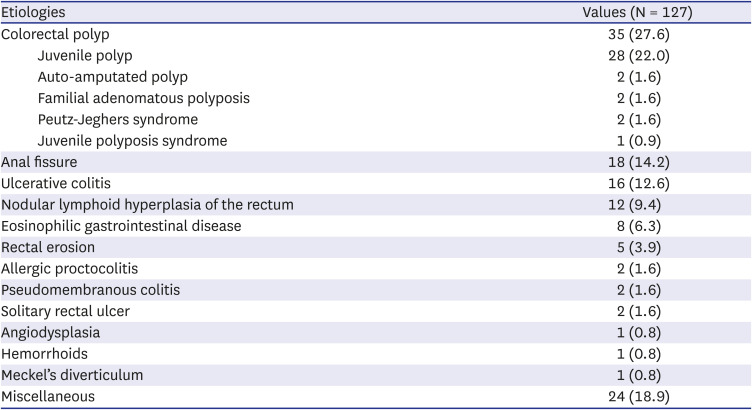
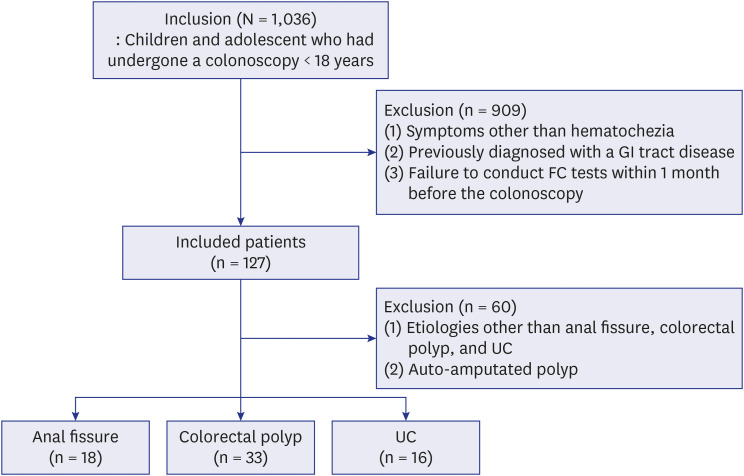
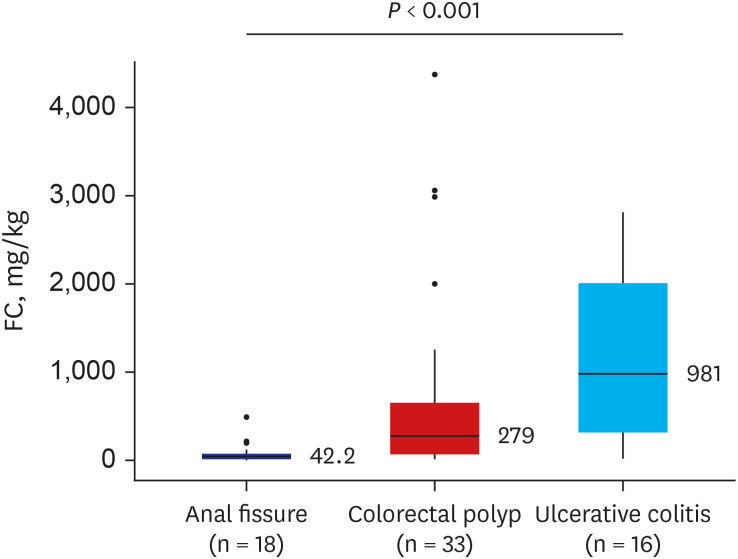

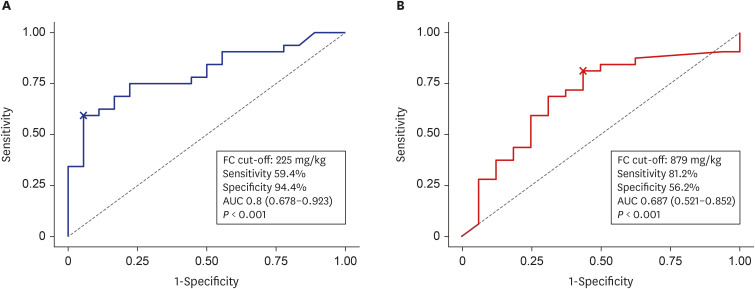




 PDF
PDF Citation
Citation Print
Print



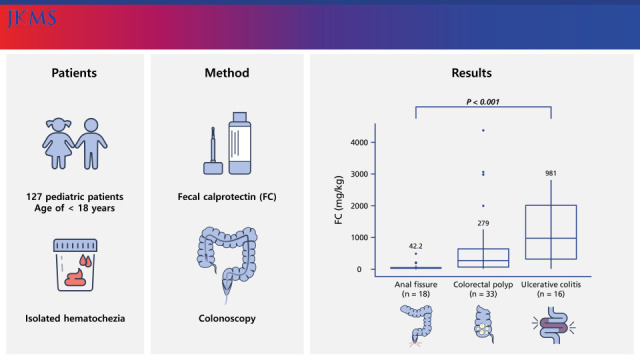
 XML Download
XML Download